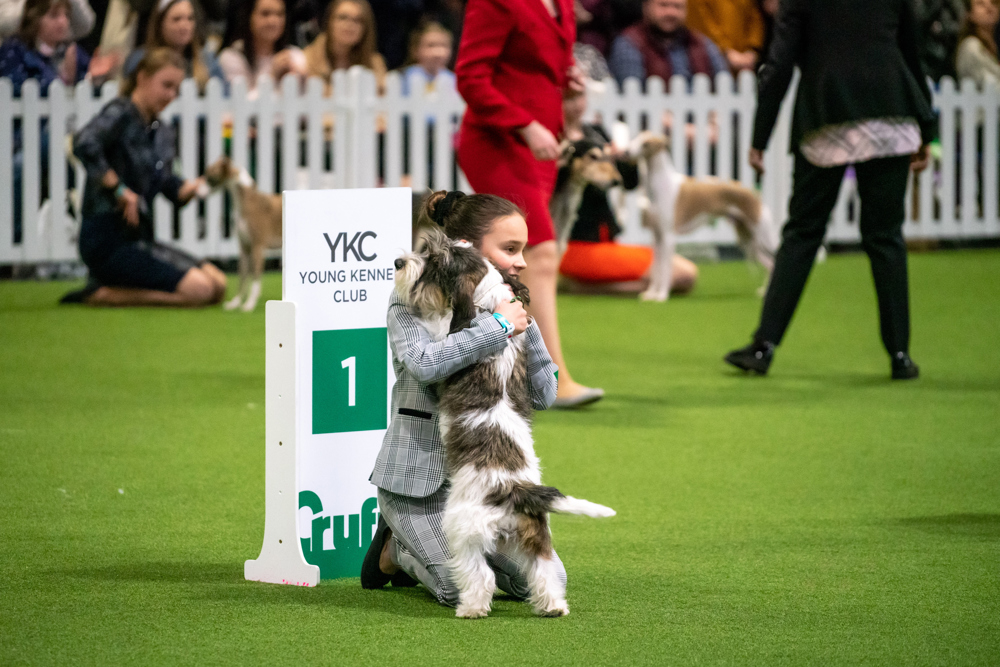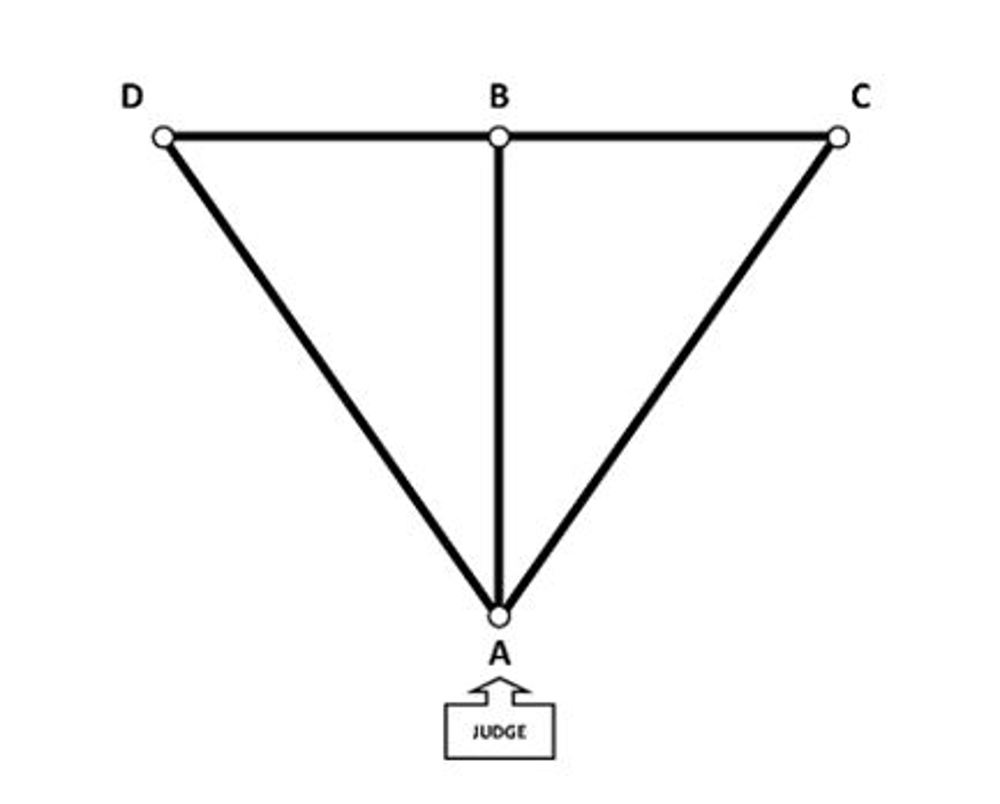
What is dog showing?
Dog showing, which is also called exhibiting, is the most popular canine activity in the UK. Each Kennel Club registered breed has a Breed Standard. The breed standard details everything about the breed such as height, colour, personality and what activities they should be able to do. The dog which comes closest to this standard will win awards. All pedigree dogs can take part in this unique hobby and you never know, you and your dog could even end up at the world’s greatest dog show – Crufts!
What is handling?
Handling competitions bring the focus back to you. Handling is really similar
to breed showing, the big difference is it’s you being judged, not the dog.
You’ll have to be able to complete patterns when the judge calls for
them, but make sure you never get in between your dog and the judge!
Even though the competition is all about you, the best handlers blend
into the background, letting their dogs do the talking!
to breed showing, the big difference is it’s you being judged, not the dog.
You’ll have to be able to complete patterns when the judge calls for
them, but make sure you never get in between your dog and the judge!
Even though the competition is all about you, the best handlers blend
into the background, letting their dogs do the talking!
Why should you take part?
- Enjoy a unique hobby and make lots of new friends
- Your dog will love being the centre of attention
- Learn new things about your breed
Competing in Young Kennel Club competitons
Stakes
To take part in the Young Kennel Club Stakes classes the dog must be registered; Solely or jointly in the member’s name or in the name of a member of the family (i.e a group of people related by blood or marriage) and under these circumstances the dog must be resident at the YKC member’s address.
In certain cases, members may be permitted, through permission from the Young Kennel Club office, to show a dog that is not registered in their name, the family name or registered at their address and must write into the Young Kennel Club office for permission to show, stating the reasons why, which will then go forward to a Management Meeting for approval. This has to be agreed before a member can compete.
In certain cases, members may be permitted, through permission from the Young Kennel Club office, to show a dog that is not registered in their name, the family name or registered at their address and must write into the Young Kennel Club office for permission to show, stating the reasons why, which will then go forward to a Management Meeting for approval. This has to be agreed before a member can compete.
Handling

Young Kennel Club handling competitions let members compete against one another to find out who is the best at showing their dog. The competition is held in exactly the same format as a breed ring, but it isn't the dog being judged, it's you! The most important thing to remember is: Never come between your dog and the judge.
Below are approved patterns that judges can ask you to do in a Young Kennel Club handling class.
Below are approved patterns that judges can ask you to do in a Young Kennel Club handling class.
The Triangle
Standard Path: A → C → D → A (picture above)
Reverse Path: A → D → C → A (picture above)
Description: ‘The Triangle’ should be made of 3 approximately equal length lines. The first straight line should begin with the handler and dog moving away from the judge towards the right-hand side. The handler should then make a left turn, bringing the dog exactly perpendicular to the judges view and start the second straight line by proceed forward approximately the same distance as the first straight line. The Handler should then perform their final left turn to face the judge and proceed forward. At each of the corners, the handler should take the outside line with the dog on the handler’s left-hand side throughout. Handlers should not need to switch hands at corners “C” or “D”.
Reverse Path: A → D → C → A (picture above)
Description: ‘The Triangle’ should be made of 3 approximately equal length lines. The first straight line should begin with the handler and dog moving away from the judge towards the right-hand side. The handler should then make a left turn, bringing the dog exactly perpendicular to the judges view and start the second straight line by proceed forward approximately the same distance as the first straight line. The Handler should then perform their final left turn to face the judge and proceed forward. At each of the corners, the handler should take the outside line with the dog on the handler’s left-hand side throughout. Handlers should not need to switch hands at corners “C” or “D”.
Up and Down
Standard Path: A → B → A (picture above)
Description: The Up and down pattern should feature two straight lines, one directly away from, and one directly towards, the judge. The handler should set off in the direction that the judge’s feet are pointing. The style of turn should be at the discretion of the handler but as long as the golden rule is not broken.
The ‘L’
Standard Path: A → B → D → B → A (picture above)
Reverse Path: A → B → C → B → A (picture above)
Description: The “L” pattern is designed for the judge to see the movement of the dog from each of its sides. The ‘L’ should be made of 4 lines. For the initial straight line, the handler should set off in the direction that the judge’s feet are pointing. The handler should then make a 90° left turn and walk in a straight line for approximately the same amount of paces as the first straight line. Upon finishing the second straight line, the handler should perform an inward-turn, during which they will be required to swap the lead into their other hand. The Handler should then retrace their steps back to the judge beginning with a straight line, followed by a 90° right hand turn, followed by a final straight to the judge.
Reverse Path: A → B → C → B → A (picture above)
Description: The “L” pattern is designed for the judge to see the movement of the dog from each of its sides. The ‘L’ should be made of 4 lines. For the initial straight line, the handler should set off in the direction that the judge’s feet are pointing. The handler should then make a 90° left turn and walk in a straight line for approximately the same amount of paces as the first straight line. Upon finishing the second straight line, the handler should perform an inward-turn, during which they will be required to swap the lead into their other hand. The Handler should then retrace their steps back to the judge beginning with a straight line, followed by a 90° right hand turn, followed by a final straight to the judge.
The ‘T’
Standard Path: A → B → D → C → B → A (picture above)
Reverse Path: A → B → C → D → B → A (picture above)
Description: The “T” pattern is a more complicated form of the L pattern. The ‘T’ should be made of 5 lines. For the initial straight line, the handler should set off in the direction that the judge’s feet are pointing. The handler should then make a 90° left turn and walk in a straight line for approximately half the amount of paces as the first straight line. Upon finishing the second straight line, the handler should perform an inward-turn, during which they will be required to swap the lead into their other hand. The Handler should then proceed straight for approximately the same amount of steps as the first line. A second inward-turn should be performed along with an accompanying swapping of hands. The handler should then proceed straight, using around half the number of paces as the first line. To finish, the handler should then turn 90° to the left and walk back towards the judge.
Reverse Path: A → B → C → D → B → A (picture above)
Description: The “T” pattern is a more complicated form of the L pattern. The ‘T’ should be made of 5 lines. For the initial straight line, the handler should set off in the direction that the judge’s feet are pointing. The handler should then make a 90° left turn and walk in a straight line for approximately half the amount of paces as the first straight line. Upon finishing the second straight line, the handler should perform an inward-turn, during which they will be required to swap the lead into their other hand. The Handler should then proceed straight for approximately the same amount of steps as the first line. A second inward-turn should be performed along with an accompanying swapping of hands. The handler should then proceed straight, using around half the number of paces as the first line. To finish, the handler should then turn 90° to the left and walk back towards the judge.
How do I take part?
- Find a training club in your area to take part in training for the event
- Your dog must be registered on The Kennel Club Breed register
- Make sure you read the Young Kennel Club Stakes and/or Handling Rules
- Dogs can enter from 6 months old

